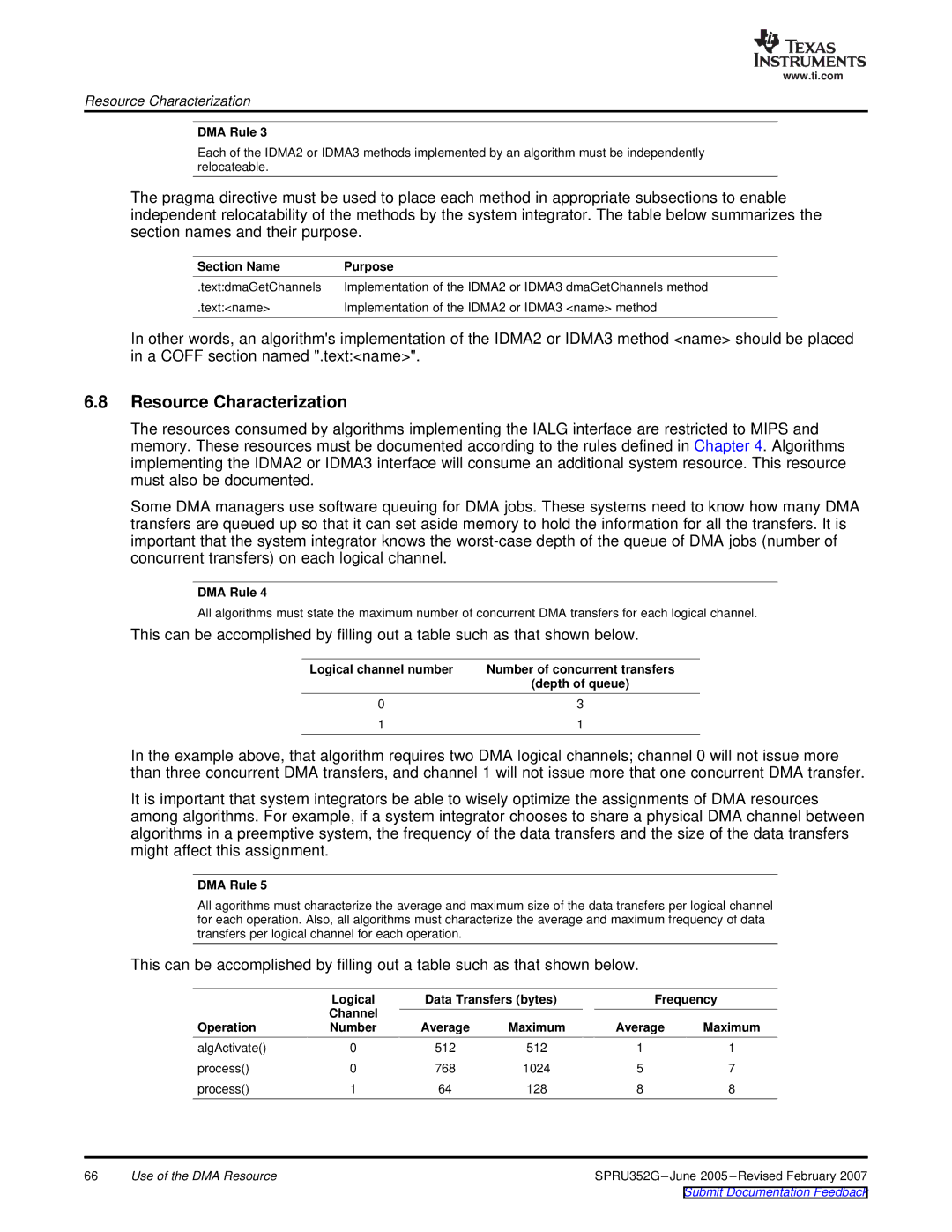
www.ti.com
Resource Characterization
DMA Rule 3
Each of the IDMA2 or IDMA3 methods implemented by an algorithm must be independently relocateable.
The pragma directive must be used to place each method in appropriate subsections to enable independent relocatability of the methods by the system integrator. The table below summarizes the section names and their purpose.
Section Name | Purpose |
.text:dmaGetChannels | Implementation of the IDMA2 or IDMA3 dmaGetChannels method |
.text:<name> | Implementation of the IDMA2 or IDMA3 <name> method |
In other words, an algorithm'simplementation of the IDMA2 or IDMA3 method <name> should be placed in a COFF section named ".text:<name>".
6.8Resource Characterization
The resources consumed by algorithms implementing the IALG interface are restricted to MIPS and memory. These resources must be documented according to the rules defined in Chapter 4. Algorithms implementing the IDMA2 or IDMA3 interface will consume an additional system resource. This resource must also be documented.
Some DMA managers use software queuing for DMA jobs. These systems need to know how many DMA transfers are queued up so that it can set aside memory to hold the information for all the transfers. It is important that the system integrator knows the
DMA Rule 4
All algorithms must state the maximum number of concurrent DMA transfers for each logical channel.
This can be accomplished by filling out a table such as that shown below.
Logical channel number | Number of concurrent transfers |
| (depth of queue) |
0 | 3 |
1 | 1 |
In the example above, that algorithm requires two DMA logical channels; channel 0 will not issue more than three concurrent DMA transfers, and channel 1 will not issue more that one concurrent DMA transfer.
It is important that system integrators be able to wisely optimize the assignments of DMA resources among algorithms. For example, if a system integrator chooses to share a physical DMA channel between algorithms in a preemptive system, the frequency of the data transfers and the size of the data transfers might affect this assignment.
DMA Rule 5
All agorithms must characterize the average and maximum size of the data transfers per logical channel for each operation. Also, all algorithms must characterize the average and maximum frequency of data transfers per logical channel for each operation.
This can be accomplished by filling out a table such as that shown below.
| Logical | Data Transfers (bytes) | Frequency | ||
| Channel |
|
|
|
|
Operation | Number | Average | Maximum | Average | Maximum |
algActivate() | 0 | 512 | 512 | 1 | 1 |
process() | 0 | 768 | 1024 | 5 | 7 |
process() | 1 | 64 | 128 | 8 | 8 |
66 | Use of the DMA Resource | SPRU352G |
|
| Submit Documentation Feedback |
